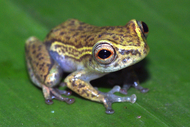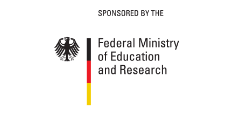Quick facts
Project title:
Population assessment of the endemic Turquoise Dwarf Gecko in Tanzania
Description
The turquoise dwarf gecko (Lygodactylus williamsi) is endemic to two small forests in eastern Tanzania, where it exclusively dwells on screwpines (Pandanus rabaiensis). To assess its population status, we surveyed its habitats at the Kimboza Forest Reserve and estimated the population size of the territorial gecko based on habitat availability, using Pandanus abundance as a proxy. Furthermore, threats to the species, especially the impact of the international pet trade on the population, were studied. Our results suggest a severe population decline. We estimate that in a period of four and a half years, at least 15% of the population were collected for the pet trade, making it a major threat to L. williamsi next to habitat degradation. Based on our results, we consider this species to be threatened with extinction (Critically Endangered).
To find out more about its status, visit the IUCN Red List account.
As a side project, the general herpetofaunal diversity of the study area was surveyed. Despite its small extent, the area harbours 22 species of amphibians and 34 reptiles, many of them recorded from the region for the first time. This remarkable diversity is caused by the location of Kimboza and the adjacent Ruvu Forest in the foothills of the Uluguru mountains, where the two biodiversity hotspots Eastern Arc and Coastal Forests meet.
Location


















